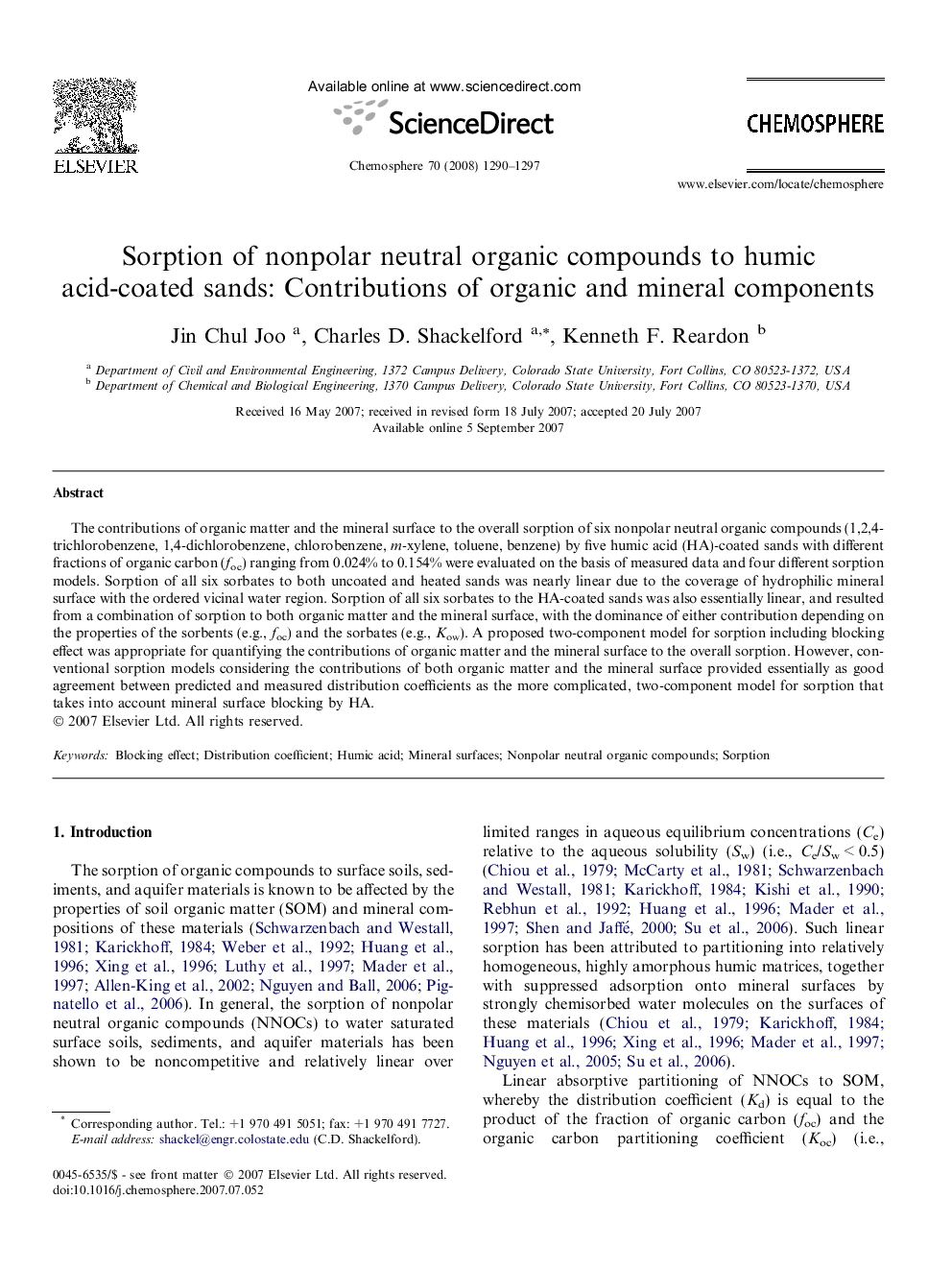| Article ID | Journal | Published Year | Pages | File Type |
|---|---|---|---|---|
| 4414160 | Chemosphere | 2008 | 8 Pages |
The contributions of organic matter and the mineral surface to the overall sorption of six nonpolar neutral organic compounds (1,2,4-trichlorobenzene, 1,4-dichlorobenzene, chlorobenzene, m-xylene, toluene, benzene) by five humic acid (HA)-coated sands with different fractions of organic carbon (foc) ranging from 0.024% to 0.154% were evaluated on the basis of measured data and four different sorption models. Sorption of all six sorbates to both uncoated and heated sands was nearly linear due to the coverage of hydrophilic mineral surface with the ordered vicinal water region. Sorption of all six sorbates to the HA-coated sands was also essentially linear, and resulted from a combination of sorption to both organic matter and the mineral surface, with the dominance of either contribution depending on the properties of the sorbents (e.g., foc) and the sorbates (e.g., Kow). A proposed two-component model for sorption including blocking effect was appropriate for quantifying the contributions of organic matter and the mineral surface to the overall sorption. However, conventional sorption models considering the contributions of both organic matter and the mineral surface provided essentially as good agreement between predicted and measured distribution coefficients as the more complicated, two-component model for sorption that takes into account mineral surface blocking by HA.
